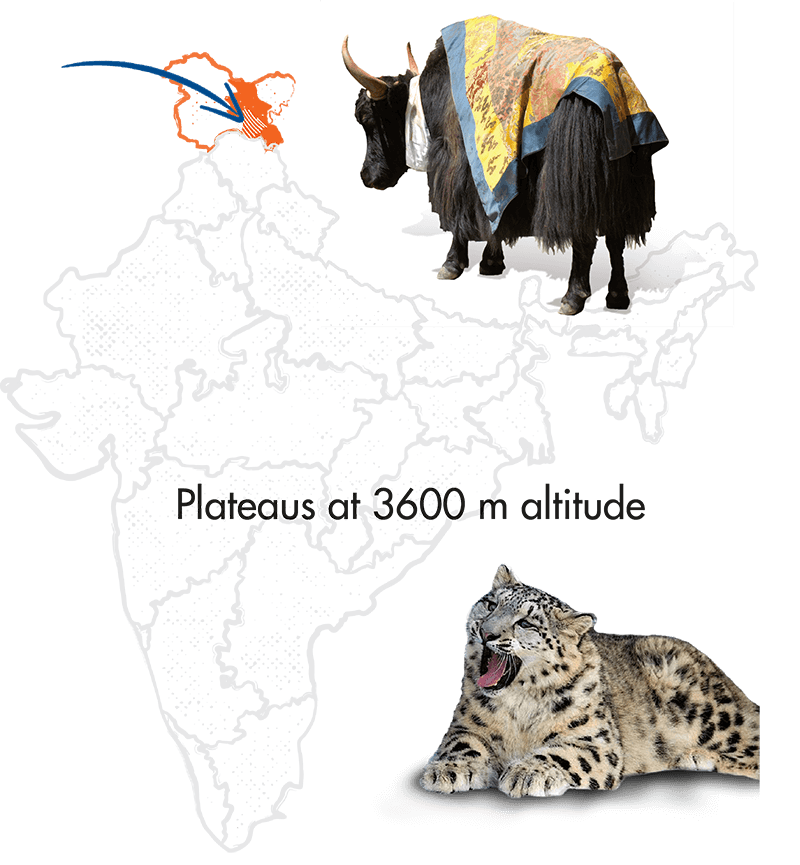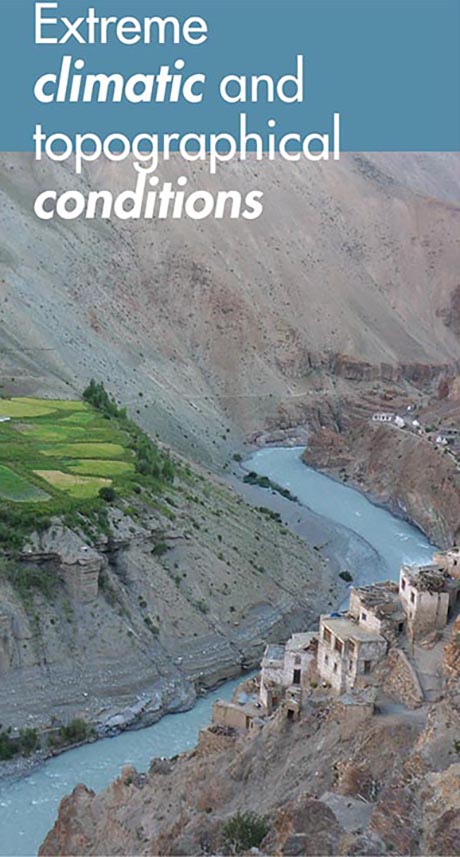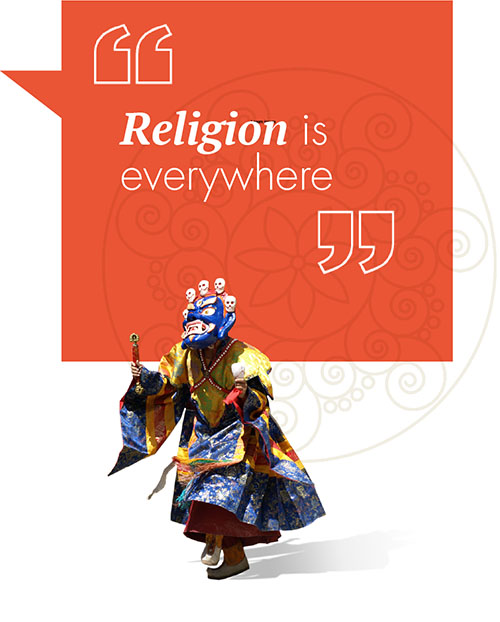Zanskar
Zanskar is located in India, in the Union Territory (UT) of Ladakh in the Himalayas.
UT is made up of two districts: Leh and Kargil. Zanskar is attached to Kargil. Prior to August 4, 2019, the date of the creation of the UT of Ladakh, Zanskar was part of the State of Jammu and Kashmir.
The mountainous terrain, combined with the harsh climate, makes this region very difficult to reach. From November, the roads become impassable and Zanskar is locked up for 6 months in frozen silence and solitude. It is one of the highest inhabited places (plateau at 3,600 m/12,000 feet altitude) and coldest places in the world (-20° to -35°C or -4 to -31ºF in winter). Climate change leads to more precipitation in both winter (snow) and summer (rain).


Plateaus at 3600m (12,000feet) altitude
Padum is the administrative center of Zanskar with an area of 7000 km² or 2,700 square miles. About 15,000 people in 25 villages provide for themselves from agriculture (barley, peas, alfalfa), sheep, yaks and goats, and tourism.
There are no fruit trees in Zanskar, the fruits are imported from other areas in Ladakh and from Kashmir.
The scarcity of arable land and water forced the Zanskarpas to develop complex irrigation networks. Barley, which adapts well to poor soil, is the main crop and its flour (tsampa) forms the basis of the diet.
The name Zanskar refers to the river that crosses this region and flows into the Indus in Ladakh. The natives call it “Chadar” during the winter. This frozen river is then the only way of accessing the region.

The name Zanskar refers to the river that crosses this region and flows into the Indus in Ladakh. The natives call it “Chadar” during the winter. This frozen river is then the only way of accessing the region.

Zanskar is predominantly a Buddhist region (Tibetan Buddhism) even if a large Muslim community lives in Padum where there are two Sunni mosques.
In each family, the custom is that one of their children, a boy or a girl, becomes a monk or a nun. Tuition is paid for by the monastery. Each home has a room with a small altar.


Each event in the life of the Zanskarpas is the occasion for a Buddhist ceremony (blessing of seeds, yaks, harvests, celebration of births, marriages and cremations).
The astrologer monk calculates which day is the most favorable to start plowing, sowing, harvesting or undertaking a journey.
THE INHERITANCE includes the fields, the animals, the house and the peyrac. This typical Zanskar headdress is worn by women. It is transmitted to the eldest daughter of the family.



POLYANDRY (where a woman is married to several men of the same family) has been prohibited since 1941. Polayandry made it possible to maintain the integrity of the estate so that the land, which was not very fertile, was not divided into plots that were too small. Today Polyandry tends to disappear.



